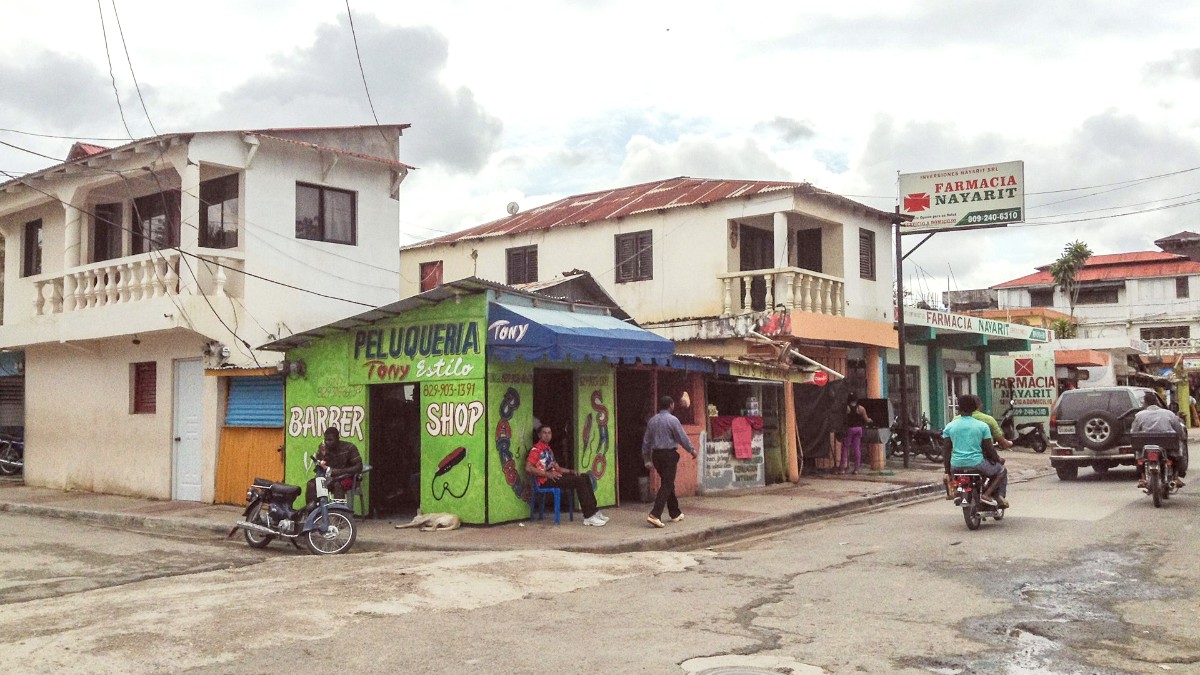
Peninsula De Samana, Dominican Republic
Spanish colonizers brought rice, various meats, and new cooking techniques. African slaves, arriving later, introduced their own culinary traditions and ingredients. This fusion resulted in dishes that are hearty, flavorful, and often slow-cooked.
Las Terrenas, in particular, benefits from its access to the Atlantic, where fishing has historically been a way of life. This means an abundance of fresh fish and seafood, often prepared with the local twist of coconut milk.
The Samaná Peninsula stands out for its distinctive use of coconut milk in savory dishes, distinguishing its cuisine from other parts of the Dominican Republic.
The most noteworthy example is "Pescado con Coco" (fish in coconut sauce), a dish you must try here.
Local tropical fruits, like passion fruit (chinola), mango, and soursop (guanábana), are abundant and feature in juices, desserts, and sometimes savory dishes.
The signature dish of Samaná. Fresh fish (snapper or mahi-mahi) cooked in a rich, creamy sauce made with local coconut milk, herbs, and spices. Find it in almost any local restaurant, especially near the beach.
A must-try for its distinct, mildly sweet, and incredibly flavorful profile.
The national dish, a foundational meal. White rice, stewed red beans, and stewed meat (chicken, beef, or pork). Often comes with a side salad or fried plantains.
A nourishing and delicious staple available everywhere.
Sancocho: A hearty, thick stew with seven meats and root vegetables. Mofongo: Mashed fried green plantains with garlic, pork cracklings, and olive oil, often served with broth or gravy.
Flavorful, filling, and widely available with various preparations.
Caramelized milk, appearing in various forms like candies, spreads, or fillings for pastries.
Bizcocho Dominicano: Known for moist texture and meringue frosting. Often served at celebrations. Flan: A classic caramel custard, smooth and sweet.
Las Terrenas has a growing number of upscale restaurants, many with European influences. They present refined dining experiences, especially along the beachfront or in the Pueblo de Pescadores area.
The majority of restaurants fall into this category. They offer a wide range of cuisines, including local Dominican, authentic French, Italian, and various fusion concepts.
The most budget-friendly way to eat, offering authentic local flavors and quick snacks.
Due to the large expatriate community, Las Terrenas has a wide variety of international restaurants.
Authentic French bistros, Italian trattorias and pizzerias, German eateries, Lebanese dishes, and American-style diners are available.
This diversity ensures that even selective palates find satisfying options and new culinary adventures.
Explore various world cuisines without leaving Las Terrenas.
Supermercado Lindo, Pola, La Sirena for groceries, fresh produce, meats, and sometimes prepared foods.
Smaller, informal markets sell fresh fruits, vegetables, and daily catches of fish, connecting you to local produce.
Increasingly available. Dishes like "Moro de Guandules," "Tostones," salads, fresh juices. Clearly communicate needs.
Limited in smaller eateries. Larger, international restaurants are more likely to accommodate. Use a Spanish translation card.
Halal and Kosher options are generally not readily available in local restaurants in Las Terrenas. Travelers with these specific dietary requirements may need to self-cater using groceries from supermarkets.
International restaurants might adapt dishes, but this is not guaranteed for strict adherence.
Awareness of gluten-free needs or specific allergens might be limited in smaller, local establishments.
Larger, more international restaurants, especially those catering to the expat community, are more likely to understand and accommodate requests. Always communicate your dietary needs clearly. Consider carrying a Translation card in Spanish.
Beyond simply eating, Las Terrenas offers opportunities to immerse yourself in the local culinary culture.
Dining in Pueblo de Pescadores: Restaurants housed in colorful wooden buildings directly on the beach, originally fishermen's shacks, offer exceptionally fresh seafood and a lively atmosphere.
Some local hotels or private chefs in Las Terrenas offer Dominican cooking classes. These often focus on regional dishes like Pescado con Coco or Mofongo, providing hands-on experience.
While less formally structured than in larger cities, you can arrange informal food tours through local guides. These tours might involve exploring local markets, sampling street food, and visiting various eateries.
Visits to cocoa or coffee plantations are possible in the wider Samaná region. These excursions offer insight into local agriculture and the production process of these popular Dominican exports.
Local festivals, specifically around national holidays or patron saint celebrations, may feature special foods and highlight culinary traditions.
These events immerse you in the local food scene.
Information about such events is best gathered locally upon arrival, through community bulletin boards, or by asking hotel staff.
Local Facebook groups for expats might also list community events.
For authentic and affordable meals, seek out a "comedore." These local eateries offer hearty Dominican dishes at prices that fit a budget.
During Christmas and other national holidays, special traditional dishes like roast pork (Pernil) and pasteles en hoja become common. Ask locals for seasonal specialties.
For specific dietary needs or allergies, communicating in Spanish is helpful. A translation app or a written note can be a very useful tool.
For an authentic and affordable meal, seek out a "comedore." These local eateries offer hearty Dominican dishes at budget-friendly prices.